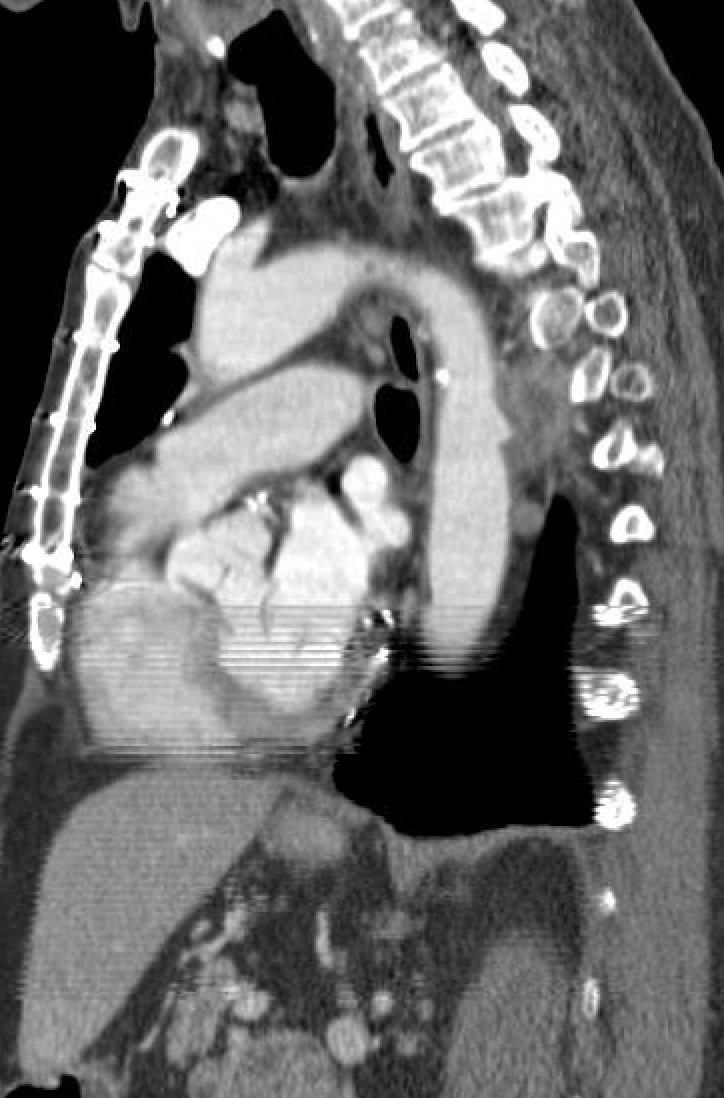Tuberculous Thoracic Aortic Aneurysm treated with Rifampin Infused Endovascular Stent Graft Repair
Juan L. Velazquez, MD, Joe T. Huang, MD, Michael A. Curi, MD, Timothy Wu, MD, Ajay K. Dhadwal, MD.
Rutgers New Jersey Medical School, Newark, NJ, USA.
Objective: The treatment of mycotic tuberculous aneurysm has classically been a combination of medical and open surgical repair. There have been few isolated reports of this rare entity. Our objective is to report a successful treatment of a mycotic tuberculous pseudoaneurysm in the thoracic aorta due to direct invasion from the thoracic spine with a stent graft repair.
Methods: Isolated case report of a successful repair of a descending thoracic tuberculous pseudoaneurysm with a covered stent graft in our institution.
Results: A 74-year-old male patient presented with intractable back pain. His medical history included hypertension, diabetes, coronary artery disease and dyslipidemia. The patient was born in India and has lived in US for the past 37 years. Patient was initially diagnosed with lumbar diskitis and osteomyelitis and treated with Vancomycin and Ceftriaxone. Follow-up MRI showed worsening osteomyelitis with associated epidural abscess in the lumbar spine. Epidural abscess cultures were positive for Mycobacterium Tuberculosis. He was started on antimycobacterial treatment (Rifampin, Isoniazid, Pyrazinamide). Follow-up CT Angiography 4 months after initial treatment showed T7-T8 paravertebral spinal tuberculosis with direct invasion into the surrounding thoracic aorta with a 0.9cm pseudoaneurysm (Image 1). The patient was deemed unfit for open incision & drainage of his spinal tuberculosis and open repair of his pseudoaneurysm. Due to the high risk of rupture, an endovascular repair was considered. An Alpha Thoracic Cook Stent graft (34mm x 113mm) was infused with Rifampin (1.8gms) and allowed to dwell for 20 minutes. This was successfully deployed with completion angiogram showing adequate exclusion of the aneurysm. Patient completed antimycobacterial treatment for one year and has undergone 6 and 12 month follow-up CT angiography which demonstrated proper location of the stent-graft with exclusion of the pseudoaneurysm sac and no evidence of endoleak.
Conclusion: Endovascular exclusion with medical treatment is a safe, durable option for tuberculous pseudoaneurysm exclusion. Bathing the graft in rifampin is imperative. 
Back to 2018 ePosters




